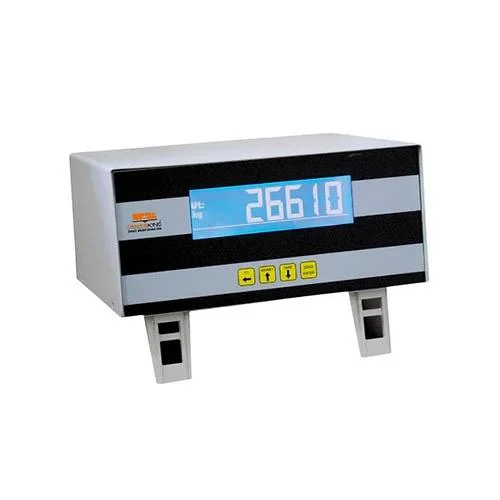How Wireless Indicators Are Changing Industrial Weighing?
- Kanta King

- 2 days ago
- 2 min read
In today’s fast-paced industrial world, accuracy is no longer enough—speed, connectivity, and real-time visibility have become equally essential. Traditional weighing systems relied on wired indicators, limiting mobility and creating challenges in harsh or dynamic work environments. But with rapid advancements in IoT and wireless technology, wireless indicators are reshaping industrial weighing like never before.

From improved data flow to safer operations, wireless indicators are quickly becoming a key upgrade for industries of all sizes.
1. Mobility That Transforms Productivity
Wireless indicators eliminate the physical restrictions of cables.Operators can now:
View weight data remotely
Move freely around the weighbridge or platform scale
Operate weighments from forklifts or control rooms
Install scales in challenging locations without running long cables
This mobility significantly improves workflow efficiency, especially in logistics, ports, mining, and warehouses, where distance and movement matter.
2. Faster Installation & Reduced Downtime
Wired systems require trenching, conduit planning, cable routing, and protection against wear and tear.Wireless indicators remove these obstacles entirely:
No complex wiring
Quicker setup and calibration
Minimal maintenance
Lower installation costs
The result: industries can commission or relocate weighing systems in a fraction of the time.
3. Real-Time Data Connectivity
Modern wireless indicators come with advanced communication options like:
Bluetooth
Wi-Fi / LAN
LoRa
GSM / 4G
RF communication
This enables seamless integration with:
ERP / SAP systems
Cloud dashboards
Fleet management software
Mobile apps
Operators and managers get instant access to weight data, improving traceability, auditability, and decision-making.
4. Enhanced Safety in Harsh Environments
Industries such as mining, chemical plants, and waste processing face harsh conditions. Wireless indicators improve safety by:
Allowing operators to stay at a safe distance
Reducing tripping hazards caused by long cables
Minimising electrical risks in wet or corrosive environments
Wireless solutions are also ideal where explosion-proof or flameproof requirements exist.
5. Accuracy Without Compromise
A common worry is whether wireless means less precision.Modern indicators use:
Encrypted digital signals
Anti-interference algorithms
High-stability load cell integration
This ensures the same accuracy as wired systems—often with better stability due to reduced electrical noise.
6. Better Scalability for Future Needs
Wireless indicators are designed for modular expansion. Industries can add:
More load cells
Additional platforms
Extra sensors (RFID, ANPR, moisture, temperature)
Cloud analytics
—all without rewiring the entire site.
This makes wireless weighing systems future-proof, supporting Industry 4.0 and smart factory initiatives.
7. Ideal for Temporary & Remote Locations
Wireless indicators shine in operations like:
Construction sites
Remote mining areas
Mobile weighbridges
Seasonal agricultural weighing
Since there’s no dependency on complex wiring, companies can deploy weighing solutions quickly and cost-effectively, even in off-grid locations.
Conclusion
Wireless indicators are not just an upgrade—they are a game-changer for modern industrial weighing. As industries move toward automation and digitalisation, wireless indicators will play a central role in building smarter, safer, and more productive weighing environments.
KANTA KING
Website: https://www.kantaking.com/
Contact Us: +91.9560915555
Email: info@kantaking.com




Comments